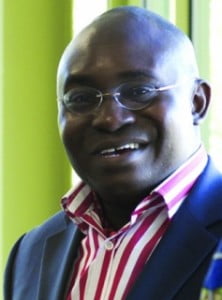“Questions on Festival”. By Wale Adebanwi.
 Query 1: The Religious Festivals Humanities Lab Project reveals that we become enmeshed in the complicated and vibrant diversity of California and because these celebrations are capable of assuaging our multicultural anxieties and they open up the possibilities of enchantment. However, I am wondering how the Studio relates these conclusions to the theoretical questions on the challenges of our postmodern lives – the gaping vacuity, the emptiness of postmodern life, particularly in a place like California, in which people are struggling for meaning? What are the implications of “the unknown of the festival that beckons to outsiders” for the struggle for meaning in individual and collective lives – and how religious practices, particularly religious performances figure in our attempts to understand our existential struggles and what seems to our personal irrelevance in the course of history and in the face of neoliberal capitalism?
Query 1: The Religious Festivals Humanities Lab Project reveals that we become enmeshed in the complicated and vibrant diversity of California and because these celebrations are capable of assuaging our multicultural anxieties and they open up the possibilities of enchantment. However, I am wondering how the Studio relates these conclusions to the theoretical questions on the challenges of our postmodern lives – the gaping vacuity, the emptiness of postmodern life, particularly in a place like California, in which people are struggling for meaning? What are the implications of “the unknown of the festival that beckons to outsiders” for the struggle for meaning in individual and collective lives – and how religious practices, particularly religious performances figure in our attempts to understand our existential struggles and what seems to our personal irrelevance in the course of history and in the face of neoliberal capitalism?
Query 2: Are the different forms of enchantment described here even if ecumenical for some, not very secular for many who participate in them? Because they are spectacles, can we read the secular into them as well as the spiritual? I like the idea of teens who use the Festival of Colors to have “good clean fun”! So, I ask, what is the conceptual apparatus of capturing exotic amusement beyond ecumenical meaning? Can we think of the inverse of profane religiosity as solemn secularity? And how do these “new religions of the street” help us to think through these alternatives – if they are alternatives at all.
Query 3: Do these rituals ultimate help in recognizing the mutuality of difference or provoke those who see non-assimilation as the basis of a permanent social, cultural and political crises? Can we simultaneously capture both the profane and the devotional in these multi-ethnic and multi-faith performances in analyzing how they help to provoke consciousness of our common humanity – even if only in fleeting moments of our lives on the streets or other specific spaces?
Query 4: Central to all the festivals is the question of affirmation of presence by the minority cultures and people. The example of the Mexican community demonstrates this most strongly as we see the grieving and grievance combine in a gesture of affirmation.
Query 5: The religious festivals project again reminds us that while the national ethos in the US has always been an affirmation of plurality, it has also always constituted a challenge to plurality: “Out of many, one” can often times be “One out of many.” I think one way to push this work further is to think about and also investigate how the dramatization of these new (diasporic) religions in a sharable public sphere reconfigure their essence, apart from their practices.
Concluding Query: How may we bring together the different shades of religious performances examined here: How religious public spectacle (as in the Festival of Colors) speak to the ecumenical significance of memory and commemoration (such as the pilgrimage to Manzanar); How the assumptions of atonement and redemption and the practices of penance and forgiveness (such as evident in the Lord of Miracles in the Peruvian community) are reconcilable with the devotional acts that seek to ensure that the ghosts of injustice and inequity will get some underserved rest, even when they are constantly resurrected.

